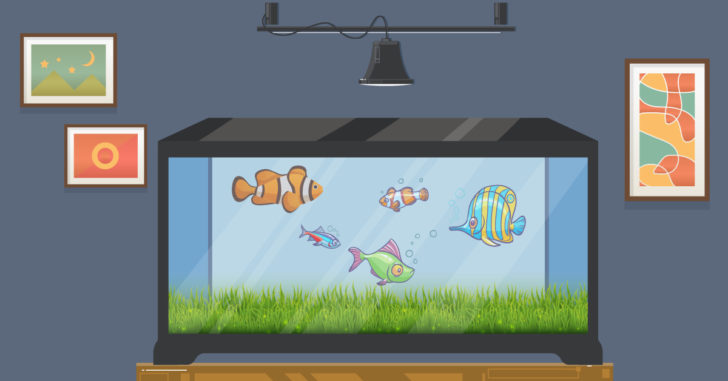Home
Utricularia graminifolia: The Lush Green Natural Grass in Your Aquarium
Table of Contents
About Utricularia and Utricularia graminifolia
Utricularia
Utricularia, commonly and collectively called the bladderworts, is a genus of carnivorous plants consisting of approximately 233 species (precise counts differ based on classification opinions; a 2001 publication lists 215 species). They occur in fresh water and wet soil as terrestrial or aquatic species across every continent except Antarctica. Utricularia are cultivated for their flowers, which are often compared with those of snapdragons and orchids, especially amongst carnivorous plant enthusiasts.
All Utricularia are carnivorous and capture small organisms by means of bladder-like traps. Terrestrial species tend to have tiny traps that feed on minute prey such as protozoa and rotifers swimming in water-saturated soil. The traps can range in size from 0.02 to 1.2 cm (0.008 to 0.5 in). Aquatic species, such as U. vulgaris (common bladderwort), possess bladders that are usually larger and can feed on more substantial prey such as water fleas (Daphnia), nematodes and even fish fry, mosquito larvae and young tadpoles.
Despite their small size, the traps are extremely sophisticated. In the active traps of the aquatic species, prey brush against trigger hairs connected to the trapdoor. The bladder, when “set”, is under negative pressure in relation to its environment so that when the trapdoor is mechanically triggered, the prey, along with the water surrounding it, is sucked into the bladder. Once the bladder is full of water, the door closes again, the whole process taking only ten to fifteen milliseconds.
Bladderworts are unusual and highly specialized plants, and the vegetative organs are not clearly separated into roots, leaves, and stems as in most other angiosperms. The bladder traps, conversely, are recognized as one of the most sophisticated structures in the plant kingdom.
Flowers and reproduction
Flowers are the only part of the plant clear of the underlying soil or water. They are usually produced at the end of thin, often vertical inflorescences. They can range in size from 0.2 to 10 cm (0.08 to 4 in) wide, and have two asymmetric labiate (unequal, lip-like) petals, the lower usually significantly larger than the upper. They can be of any colour, or of many colours, and are similar in structure to the flowers of a related carnivorous genus, Pinguicula.
The flowers of aquatic varieties like U. vulgaris are often described as similar to small yellow snapdragons, and the Australian species U. dichotoma can produce the effect of a field full of violets on nodding stems. The epiphytic species of South America, however, are generally considered to have the showiest, as well as the largest, flowers. It is these species that are frequently compared with orchids.
Certain plants in particular seasons might produce closed, self-pollinating (cleistogamous) flowers; but the same plant or species might produce open, insect-pollinated flowers elsewhere or at a different time of year, and with no obvious pattern. Sometimes, individual plants have both types of flower at the same time: aquatic species such as U. dimorphantha and U. geminiscapa, for example, usually have open flowers riding clear of the water and one or more closed, self-pollinating flowers beneath the water. Seeds are numerous and small and for the majority of species are 0.2 to 1 mm (0.008 to 0.04 in) long.
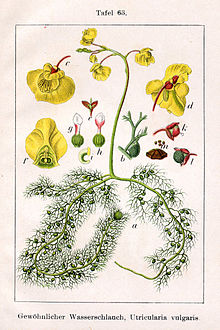
Utricularia graminifolia is a small perennialcarnivorous plant that belongs to the genusUtricularia. It is native to Asia, where it can be found in Burma, China, India, Sri Lanka, and Thailand. U. graminifolia grows as a terrestrial or affixed subaquatic plant in wet soils or in marshes, usually at lower altitudes but ascending to 1,500 m (4,921 ft) in Burma. It was originally described and published by Martin Vahl in 1804. It has also recently been grown in planted aquaria.
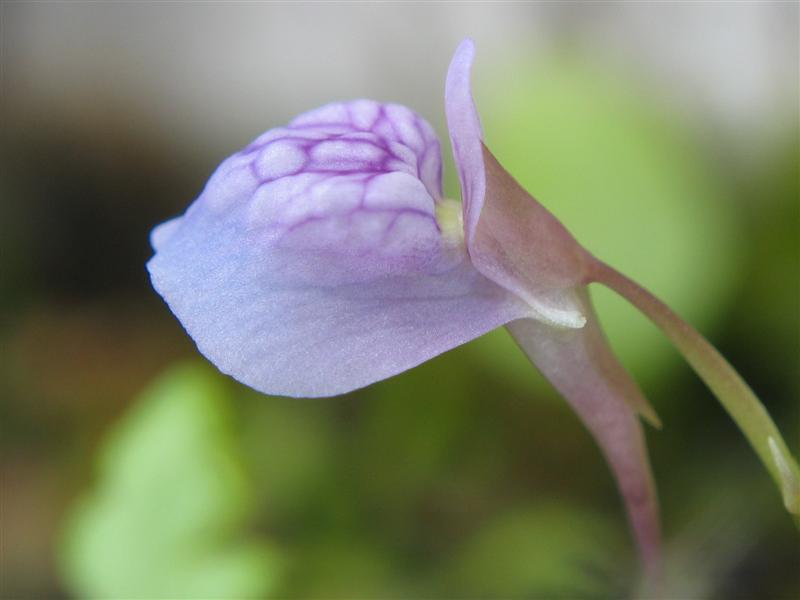
There are thousands of plants around us today.
However, few of them are named by name, and the rest are distinguished by their beauty, flower colours, leaf shapes, height, etc. we remember the features.
And while we are always on the lookout for unique and beautiful plants to grow at home, there are some plants that actually leave a lasting impression on us.
Why?
For their pure beauty and distinctiveness.
Wouldn’t it surprise you to have your lawn moved into your fish tank? Of course, yes, here it is.
Utricularia graminifolia (UG) is a perennial grass-like plant that you can grow in your fish aquarium. So, are you ready to explore it?
What Is Utricularia graminifolia?
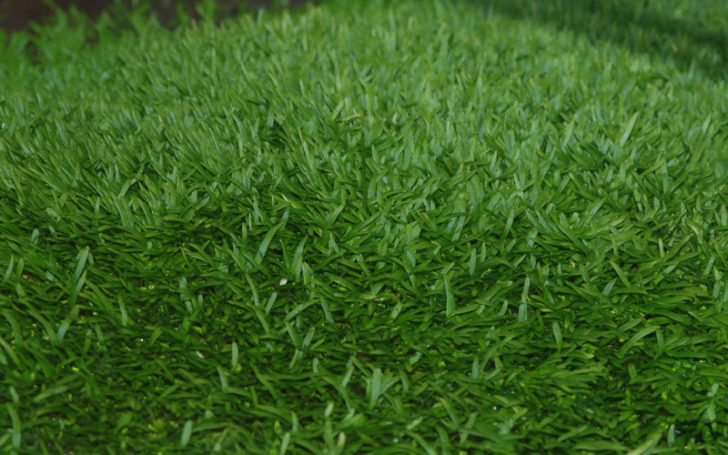
Commonly known as Grass Leaf Bladder grass, Utricularia g. It is a herbaceous plant that grows in water and eats insects.
It belongs to the genus Utricularia, a genus of carnivorous plants with 233 species, including Utricularia g. is one.
It lives both in water and on land – that is, it grows both in and out of water. But it grows best in water.
It is native to Asian countries, including Burma, India, Sri Lanka, Thailand, China, and Vietnam, where it is found in swamps, wetlands, and coastal areas.
Unlike other plants that can be grown in pots, UG does not grow this way. The leaves of this plant look like grass.
They are up to 2-8 cm long and 2 mm wide. All leaves are attached to a base called a runner.
Under good conditions it expands and condenses to look like grass.
At the base of the leaves are small vesicles, which are traps with which it catches insects.
We also find a type of dry grass that grows well in scarce water conditions and is an excellent staple food for livestock, horses and other animals.
Quick Facts about Utricularia graminifolia
| Common Name | Grass Leaved Bladderfort |
| Scientific Name | Utricularia graminifolia |
| Genus | Utricularia |
| Feeding Behavior | Carnivorous |
| Origin | Asian countries: India, Srilanka, Thailand, etc |
| Type | Perineal |
| Height | 3-10cm |
| Light Need | Medium |
| CO2 | Medium |
| Humidity | 100% (Submerged) |
Taxonomic Hierarchy of UG
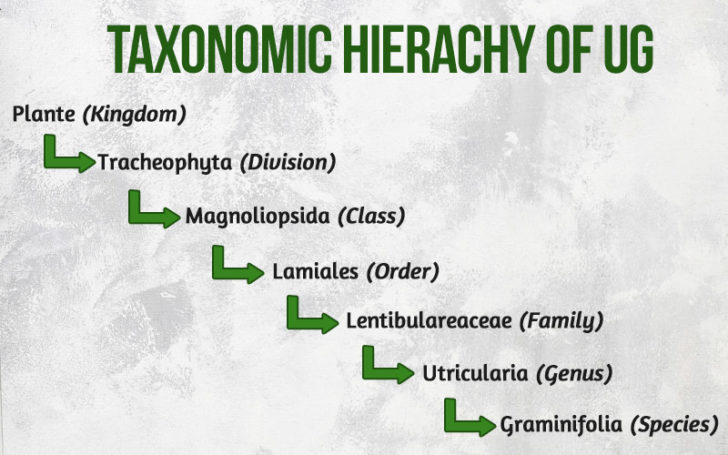
The above hierarchy is a brief overview of the classification of Plant Kingdom, Plantae, which ultimately leads to the Utricularia g. plant.
How to Grow Utricularia graminifolia?
Most aquarists misunderstand it as a regular aquatic carpet plant. It does not grow by traditional methods; instead, it grows in a completely different way.
By nature, UG is not a carpet factory. Instead, it is a floating thing that attaches itself to any object that comes into its place.
Let’s look at a few of the commonly used methods for growing Utricularia g.
1. Dry Start Method
The Utricularia graminifolia dry start method requires starting its growth without submerging it in water.
According to this method, UG Aquarium Plant is grown terrestrial in a high humidity environment.
It grows awkwardly the first week, which means it grows on itself rather than hitting runners first.
It creates a stability problem because it has no roots.
When significant height is reached and carpet formation begins, the tank is filled with water.
After that, the plant continues to grow and develop a carpet in the substrate.
However, as a cycle is about to end, ammonia begins to ooze out, causing the UG to wilt.
Because Ammonia starts to damage from the bottom, which is not noticed at first, but once increased it results in uprooting.
Eventually, the carpet of Utricularia graminifolia separates and floats on the surface.
In short, in this method, the base of the carpet is not solid. (Utricularia graminifolia)
2. Tidal Marsh Method
Under the Tidal Marsh method, the tissue-cultured Utricularia graminifolia is connected by a substrate-filled network structure.
A layer of Dragon Stone is spread at the bottom of the aquarium while the net structure remains on top.
Finally, a water pump and reservoir tank are installed in the aquarium to create the natural tide of the water.
The reason for this is to reproduce the natural environment. No fertilizer or carbon dioxide is used.
A few days later, Utricularia would begin to grow, filing in crevices and crawling along stones.
In this method, thawing or uprooting of Utricularia graminifolia does not occur. Instead, the carpet grows much faster. (Utricularia graminifolia)
3. Peat Moss Method
Peat moss is one of the best practices to follow. This is the key to the method.
The first layer of the aquarium is made with peat moss, then covered with copious amounts of gravel.
The UG is then planted about an inch apart.
In this method, no carbon dioxide is used, no fertilizer is used. Surprisingly, you will notice that the carpet will grow much faster.
The obvious reason for this is that the substrate is poor in nutrients and rich in acids with small organisms such as algae in it serving as a food for UG.
This method also causes the flowers of Utricularia graminifolia to grow, which is very rare in UG. (Utricularia graminifolia)
5 Do’s of Growing Utricularia Graminifolia (Utricularia g. Care Tips)
The following should be kept in mind if you are going to grow UG in your aquarium.
1. Does not Require Specific Temperature
Since this aquarium grass is wild in nature, it does not need a specific temperature to grow.
A temperature range of 18 to 25°C or 64° to 77°F is considered ideal for UG.
2. Put it Under Moderate Light
Medium to high lighting intensity is required for its normal growth. Partial sun to slightly dappled light: 10-14 hours a day.
3. Use Soft Water
Generally, water with a PH of 5-7 is considered ideal for UG. Tropical water with poor nutrients and high acidity is good for the growth of UG.
4. Inject CO2 For Better Growth
Carbon dioxide is not required for UG to grow, but it grows much faster if CO2 is injected.
5. Trim Once it Grows
It takes about three months from the time you place it on the substrate to the exact carpet time.
You need to trim several times to equalize the height of the leaves and achieve better growth.
3 Don’ts of Growing Utricularia Graminifolia
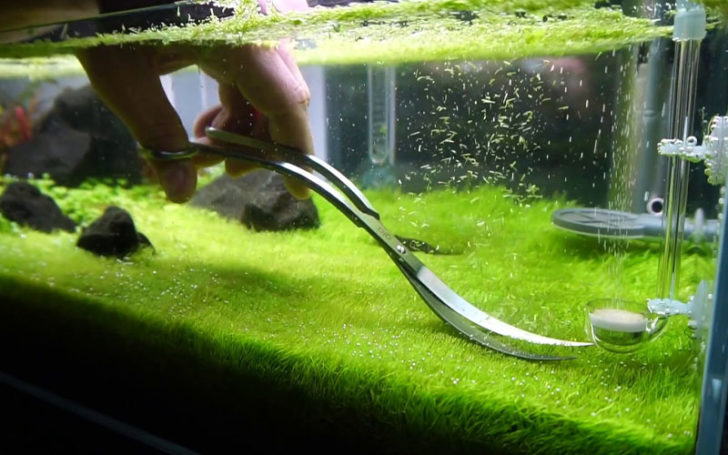
1. Don’t Use Nutrient-Rich Soil
Some people who are unaware of UG growing techniques often fill their tanks with aquatic soil.
And when they fail to grow, they add fertilizer, which is wrong.
Soils such as Amazonia for UNS Aquariums are rich in nutrients and do not suit the nature of this plant. Therefore, use nutrient-deprived eco-completion with gravel.
Alternatively, add peat moss under the gravel layer and let it sit for a few days.
Use RO Water (Reverse Osmosis) for this plant as this plant prefers softer water below 100 TDS (Total Dissolved Solids).
Usually, our tap water and mineral water have a TDS value between 100-200.
2. Don’t Use Fertilizer
Do not use fertilizers for this plant, especially when cycling; otherwise it will kill the plant.
3. Don’t Use Much Light
Do not use too much light; instead, only a sufficient amount of light is required.
Under intense light it will produce bright green leaves, while under low light the leaves will be darker and bushy.
Your aquarium doesn’t need to have CO2 running.
Make sure the microorganism is ready for this plant which is mostly made by Peat moss.
Inside the Carnivorous Nature of Utricularia graminifolia
All plants belonging to the Utricularia genus, such as Utricularia Bifida, have vacuum-operated bladders attached to their runners.
If we look at the diet of Utricularia graminifolia, we learn that it has a more advanced system for trapping its prey than any other carnivorous plant.
The shape of the bladder is pod-like. Even though there is a space inside the bladders, they can still hold their shape.
The bladder wall is thin and transparent. The mouth of the trap is oval and is closed by a thickening of the bladder, not by any lid.
The mouth is surrounded by antennae, which is a double-edged sword.
It directs prey to the entrance while keeping larger animals at bay.
Unlike other carnivorous plants such as Dionaea, the capture system of this aquatic Utricularia is mechanical and requires no action from the plant other than pumping it out through the bladder walls.
As soon as the water is pumped out, the bladder walls are stretched inward and the mouth is closed.
The prey inside is then consumed by the plant and nitrogen and phosphorus are extracted from it.
Why Should You Grow Utricularia graminifolia?
1. An immense Beauty to Your Aquarium
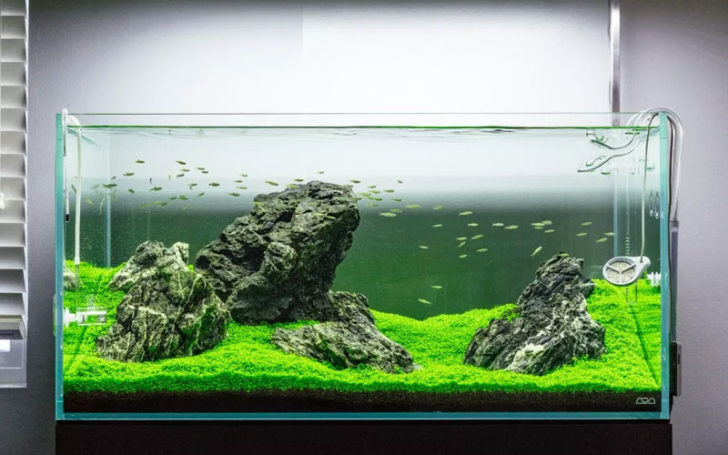
What could be more beautiful than a wave of lush green grass in your water tank that gives your room a cool and pleasant look?
Literally, it’s like your grass has been moved into your aquarium.
Whether it’s Utricularia graminifolia terrarium or your favorite aquarium with UG, it may take some time to spread initially, but once started it grows fast.
Grass in the water will be a regular topic of discussion between your family members and friends whenever they take a look.
2. Easy To Grow and Maintain
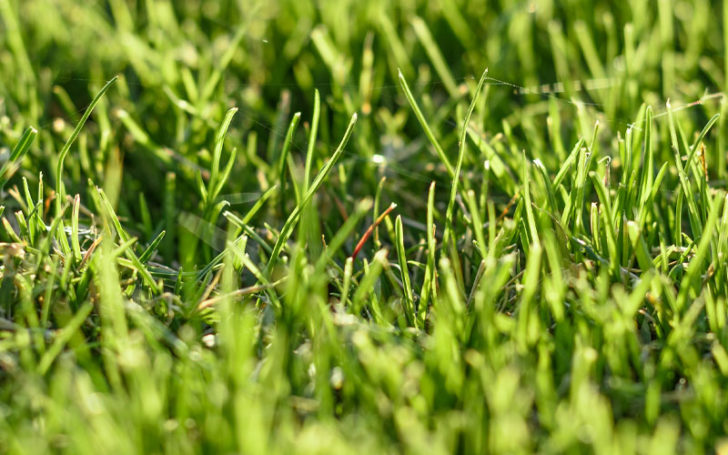
As the origin of Utricularia g. It grows quite rapidly in peatlands, marshes, wetlands and stream banks without specific weather conditions or special conditions such as direct sunlight.
For those who love gardening and want to use their enthusiasm and passion indoors, planting Utricularia graminifolia is the best way to go.
Why? because it keeps you busy from planting to pruning.
3. Natural Grass
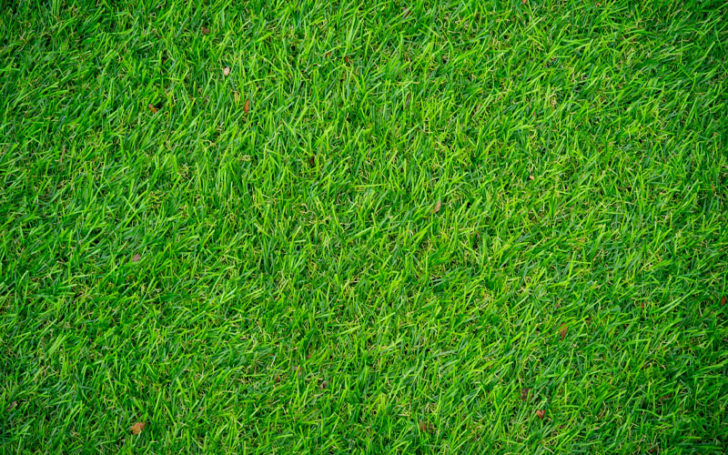
Instead of artificial plastic grass that harms the fish in your mole aquarium, try this natural grass that will make you feel comfortable watching it.
The importance of green space is widely recognized worldwide. Even studies have shown that green space plays a crucial role in the mental health of the people who watch it.
Frequently Asked Questions (FAQ)
1. Can Utricularia g. eat fish fry in my aquarium?
Utricularia graminifolia is a carnivorous plant that usually eats paramecium, amoeba, water fleas, water worms and mosquito larvae in water.
However, the fish fry are too large to be caught in their bladder. So you can add the fish fry without any worries.
2. What does Utricularia graminifolia eat?
Because it is carnivorous, it relies on small aquatic creatures often found in peat moss for its survival.
So the idea of putting Utricularia graminifolia and shrimps in the fish tank is not good as the new fry will be eaten whereas only the adults will survive which will die very soon.
3. How do you plant Utricularia graminifolia?
- Remove the sticky adhesive at the bottom after purchase.
- After the glue is removed, divide it into several bundles.
- Assuming you’ve already done the aquarium with peat moss and gravel, space each bunch 2-4 inches apart.
4. How do you grow Utricularia graminifolia (UG)?
You need a normal size aquarium, pebbles, light source. You can find Utricularia graminifolia for sale on many gardening websites.
After purchase, thaw and plant in the tank, assuming you have made the bottom of the aquarium with peat moss as described above.
5. Where can I find Utricularia graminifolia seeds?
Like ordinary grasses, Utricularia g. grows with a group that already has some runners attached.
To grow in your fish pond, buy online or get a handful of them from any of your friends who are already raising them.
6. What eats Bladderwort?
Blasserwort is eaten if it is grown as a terrestrial plant. Bladdergrass-eating animals include wood ducks, mallards, and turtles.
Bladder waters also produce nectar when they bloom from May to September. Honeybees and flies involuntarily act as pollinators while they eat nectar from their flowers.
Conclusion
UG is one of the most innovative ways to light up your aquarium. Instead of using fake grass, use real grass that looks like grass.
The conditions it needs for growth are often found in our homes, regardless of geographic location.
Moreover, its carnivorous nature does not allow the growth of unwanted organisms that make your aquarium look dirty.
So, are you planning to grow Utricularia g? in your aquarium? Let us know in the comment section.

